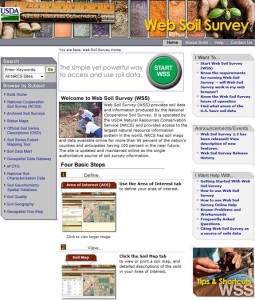
Dr. Mark McFarland of AgriLife Extension explaining soils at Ranch Management University.
Soil is a natural body comprised of solids (minerals and organic matter), liquid, and gases that occurs on the land surface, occupies space, and is characterized by one or both of the following: horizons, or layers, that are distinguishable from the initial material as a result of additions, losses, transfers, and transformations of energy and matter or the ability to support rooted plants in a natural environment. (Definition taken from Soil Taxonomy, second edition)
In more simple terms, soil is made up of air, water, decayed plant residue, organic matter from living and dead organisms, and minerals, such as sand, silt and clay. Increasing soil organic matter typically improves soil health since organic matter affects several critical soil functions. Healthy soils are also porous, which allows air and water to move freely through them. This balance ensures a suitable habitat for the myriad of soil organisms that support growing plants.
Soil is the foundation for your land and was formed depending on the climate, geology, and hydrology of your area. Many different soil types may be present on your property and these different soil types will support various plant species. Landowners need to be protective of their soil by maintaining vegetative cover and not allowing the land to be overrun by aggressive brush or invasive plant species. Proper grazing and brush management are the best ways to do this.
The benefits of doing this are numerous, including:
- Greater rainfall infiltration
- Less runoff and soil erosion
- Increased Plant Production
- Better wildlife habitat
- $$Bigger profits$$
To learn about the many more benefits of soil health and how to manage your soil, visit the USDA-Natural Resource Conservation Service Soil Health and Soil Education websites.

Screenshot of Web Soil Survey website.
NRCS has developed a useful tool for examining the soils on your property, the Web Soil Survey. It is important to know the soils on your property, as the soil type can predict the vegetative species that can grow on your property. This website allows you to select a specific area and learn valuable information for those soil types, such as which plants grow best, infiltration rates, and more. You can also print a map of the area to know approximately where different soil types are located on your property.
After many years of agricultural production, soils typically will lose nutrients that are required to sustain plant productivity, such as nitrogen and phosphorus. Landowners interested in restoring native prairie plants should test their soil to determine if their are sufficient nutrients available to grow those plants and not waste money doing restoration activities. You can contact your local County Extension Agent to receive a free soil sampling bag to place soil into, which can then be sent to the Soil, Water, and Forage Testing Laboratory, where it will be tested and they will provide you with a report describing which nutrients are lacking with recommendations. Watch the video below to see how to take a soil sample easily.